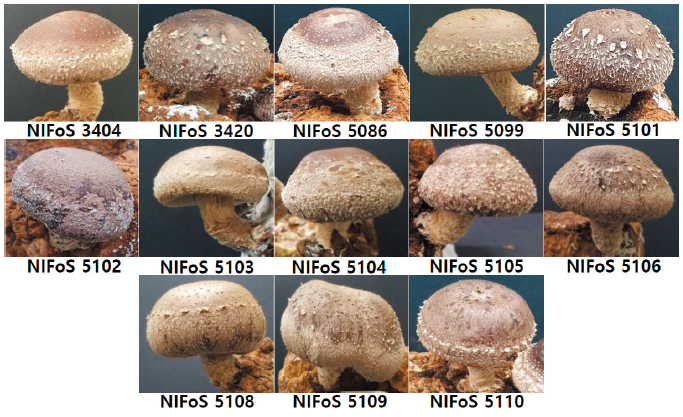Abstract
Figures & Tables

Fig. 1. Morphological characteristics of fruiting bodies of on sawdust bag cultivation. Parent strains: NIFoS (3404, 3420); Hybrid strains: NIFoS (5086, 5099, 5101, 5102, 5103, 5104, 5105, 5106, 5108, 5109, 5110). NIFoS, National Institute of Forest Science.


